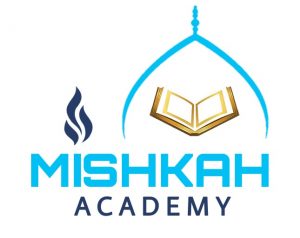Noorani Qaida is a beginner’s guide to learning the Arabic alphabet and pronunciation for Quranic reading. It provides structured lessons that focus on each letter’s phonetics, helping learners understand the basics of Arabic sounds. Designed especially for children and non-native speakers, Noorani Qaida builds a foundation in Tajweed, the rules for correct Quranic recitation.
When you learn Noorani Qaida course, you develop the skills needed to read the Quran fluently and accurately. This step-by-step approach ensures clear pronunciation and a better understanding of Arabic, making it an essential tool for anyone beginning their journey with the Quran.
What is Noorani Qaida? [Meaning, Historical Background, Structure, Method]
Table of Contents
ToggleNoorani Qaida, also called “Qaida” is a foundational book designed to help non-Arabic-speaking Muslims learn to read Arabic quickly and easily. It is widely used as the first step for learning to read the Quran and to grasp the basics of Tajweed, the rules of proper Quranic pronunciation.
This text simplifies the Arabic language and pronunciation, making it accessible to learners of all ages and backgrounds.
Historical Background
The Noorani Qaida was created by Maulvi Noor Muhammad Ludhianvi, a respected Islamic scholar. His goal was to make Quranic reading easier for beginners by breaking down the complexities of Arabic script.
The Qaida has since become a popular teaching tool in many Muslim communities, particularly for children and beginners, allowing them to build a strong foundation in Quranic Arabic.
Structure of Noorani Qaida
The Noorani Qaida follows a clear structure that gradually introduces students to the Arabic alphabet and phonetics. It starts with individual Arabic letters and their sounds, teaching students to recognize, pronounce, and combine letters to form words.
As they progress, learners encounter diacritical marks (tashkeel) and rules like elongation (madd), all of which are essential for proper Quranic recitation.
Method
The Noorani Qaida method involves a step-by-step learning approach, blending theory with practical exercises.
Guided by a qualified teacher, students receive corrections and explanations to ensure they grasp each lesson correctly, laying a strong foundation for accurate Quranic reading.
Start Your Noorani Qaida Learning NowWhat Does Noorani Qaida Contain? [Lessons]
Here’s what the Qaida contains:
| Chapter | Name | Description |
| 1 | Arabic Alphabets | Introduces the 29 Arabic letters, focusing on recognizing each letter and learning its individual sound. |
| 2 | Compound Letters | Teaches compound letter combinations, helping learners understand how letters look when joined together. |
| 3 | Makhraij (Letter Origins) | Covers the pronunciation origins of each letter, emphasizing the correct articulation points in the mouth. |
| 4 | Short Vowels (Harakat) | Introduces the three short vowels: Fatha (a), Kasra (i), and Damma (u), and how they affect letter sounds. |
| 5 | Sukoon | Teaches the Sukoon symbol, indicating silent letters, and how to read letters without vowel sounds. |
| 6 | Long Vowels (Madd) | Explains long vowel sounds and their importance in Arabic pronunciation, focusing on vowel elongation. |
| 7 | Tanween | Introduces Tanween (double vowels) and how to read words ending in -an, -in, or -un sounds. |
| 8 | Noon Sakin and Tanween | Covers rules for Noon Sakin (silent Noon) and Tanween, including special pronunciation rules for both. |
| 9 | Rules of Meem Sakin | Explains the rules for Meem Sakin (silent Meem), focusing on correct nasalization and pronunciation. |
| 10 | Laam Rules | Introduces Laam pronunciation rules, especially for the word “Allah,” with emphasis on light and heavy sounds. |
| 11 | Qalqalah | Teaches the Qalqalah rule, or the “echoing” effect, for specific letters in certain conditions. |
| 12 | Madd Letters | Covers the elongated vowel sounds for Madd letters, crucial for prolonged pronunciation. |
| 13 | Tashdeed | Introduces Tashdeed (double consonants) and emphasizes stress in pronunciation where needed. |
| 14 | Tashdeed with Tanween | Combines Tashdeed and Tanween rules to help learners manage double sounds in words. |
| 15 | Tashdeed with Madd | Covers the rules of Tashdeed combined with Madd, focusing on stressed and elongated sounds. |
| 16 | Practice Words and Phrases | Provides practice with commonly used words and phrases, helping reinforce previous lessons in context. |
| 17 | Basic Sentences | Introduces short sentences for practice, developing confidence in reading simple Arabic sentences. |
Why is Noorani Qaida Important?
Noorani Qaida is essential for anyone beginning to learn Quranic recitation, particularly for non-Arabic speakers. As a foundational guide, it introduces the Arabic alphabet, correct pronunciation, and Tajweed rules, building a solid base for further Quranic studies. Noorani Qaida helps learners develop the right accent and accurate pronunciation, making Quranic recitation clear and correct from the start.
For non-Arabs, this structured approach is especially valuable, as it tackles common challenges in Arabic, such as articulation points and phonetic details. The gradual lessons cover everything from basic letter recognition to advanced Tajweed, allowing students to progress smoothly.
Additionally, Noorani Qaida’s colored layout makes learning more engaging, especially for young children. With its accessible design, this resource connects learners to the Quran’s beauty, fostering a deep spiritual and linguistic connection.
Best Ways to Learn Noorani Qaida
Here are eight tips to learn Noorani Qaida from the beginning:
- Get a physical or digital copy of Noorani Qaida to study from.
- Find a qualified tutor or teacher to guide you through each lesson.
- Utilize online resources like videos and tutorials for additional practice.
- Begin by mastering the Arabic alphabet and its sounds before progressing.
- Practice pronunciation consistently and ask for corrections when needed.
- Read aloud daily to improve quran recitation fluency and reinforce pronunciation accuracy.
- Move to more advanced tajweed lessons, like Quranic grammar and Tajweed rules, gradually.
- Practice regularly, even for short sessions, to build confidence and consistency.
How Long Does It Take to Finish Noorani Qaida?
Completing Noorani Qaida typically takes between 6 months to 2 years, though this varies widely. Some learners finish in just 2 to 4 months, while others take around 6 months to a year, depending on their pace and consistency. The key factors are regular practice, focus, and understanding of each lesson.
Quick progress is commendable, but mastering pronunciation and basic Tajweed rules is essential for effective Quran recitation. With steady commitment, even young children can move through the material efficiently. Ultimately, the time taken depends on individual learning speed and dedication to regular practice.
Final Words
Noorani Qaida is a foundational tool for learning Quran recitation, helping beginners master Arabic pronunciation and the basics of Tajweed. Mishkah Academy stands out in this field, offering expert instruction from tutors with years of experience teaching Noorani Qaida and learn quran online at home. Their structured approach and knowledgeable teachers ensure students gain a thorough understanding.
Start Your Noorani Qaida Learning Now





